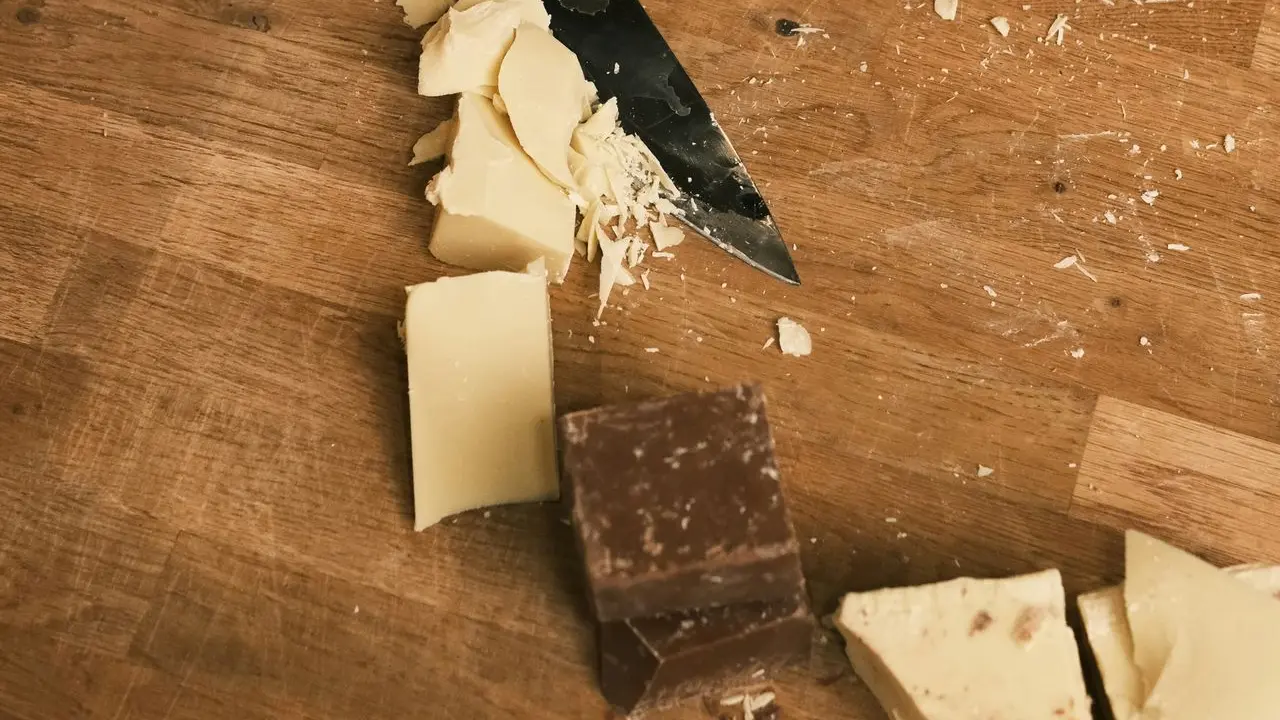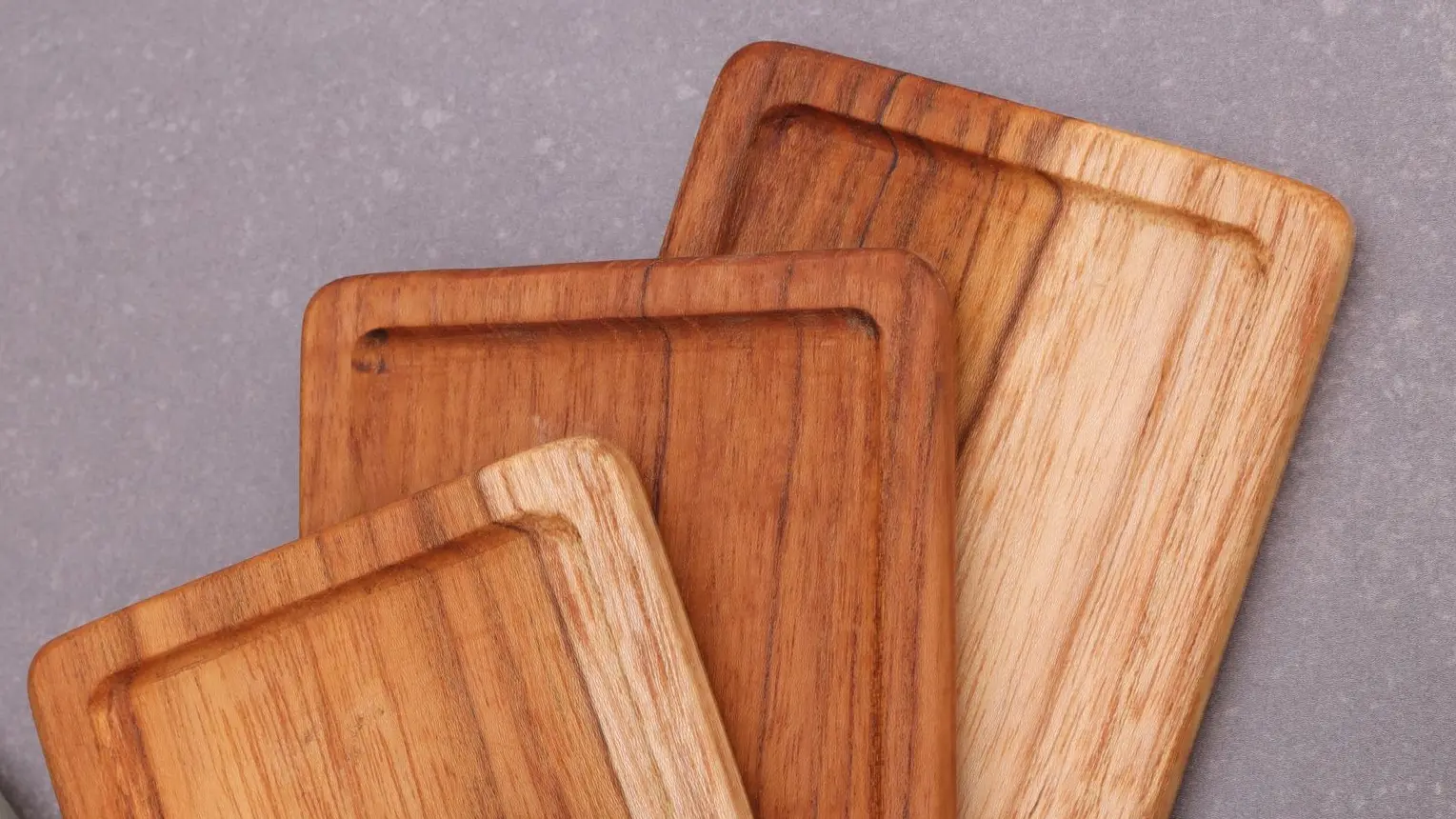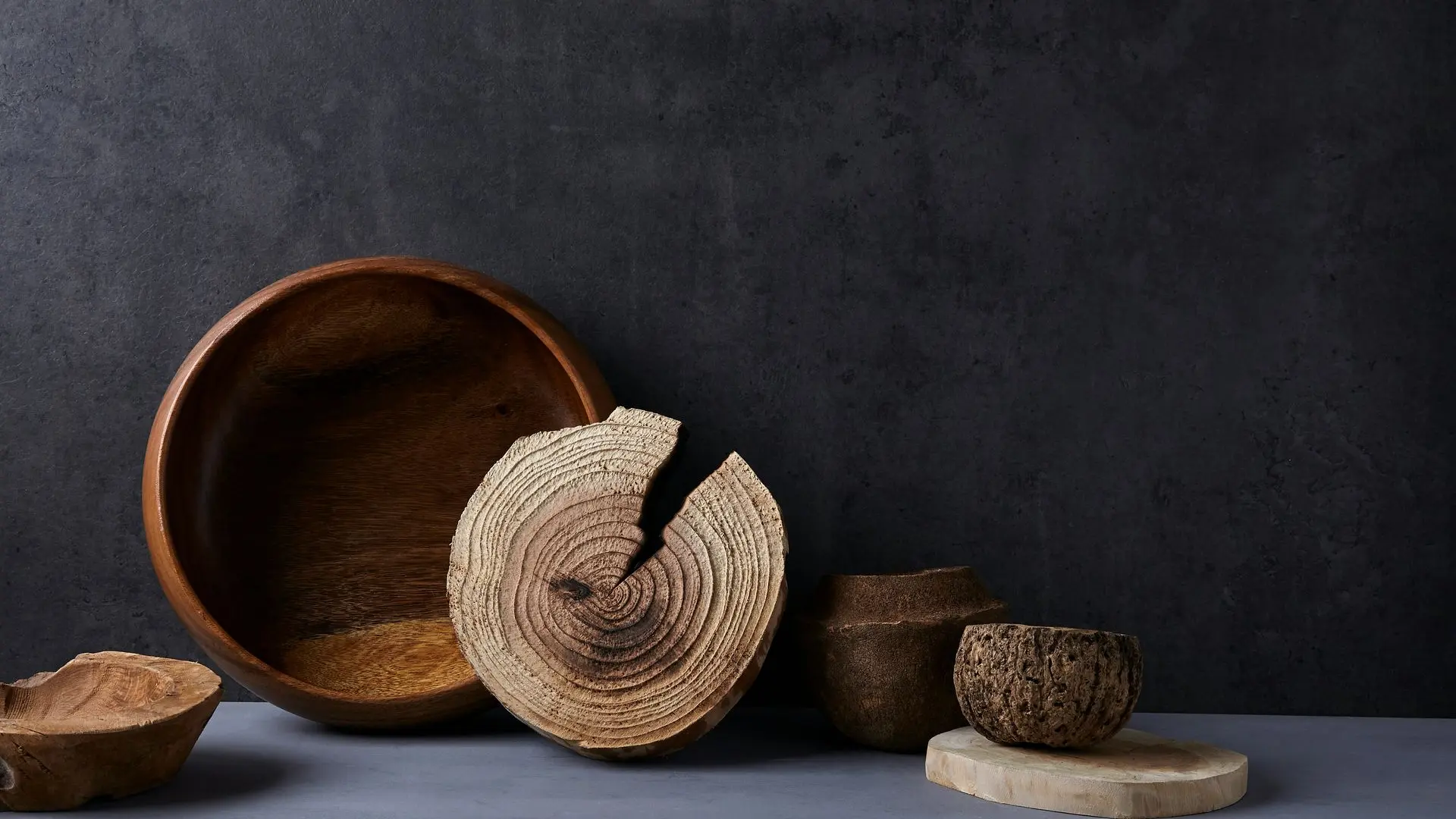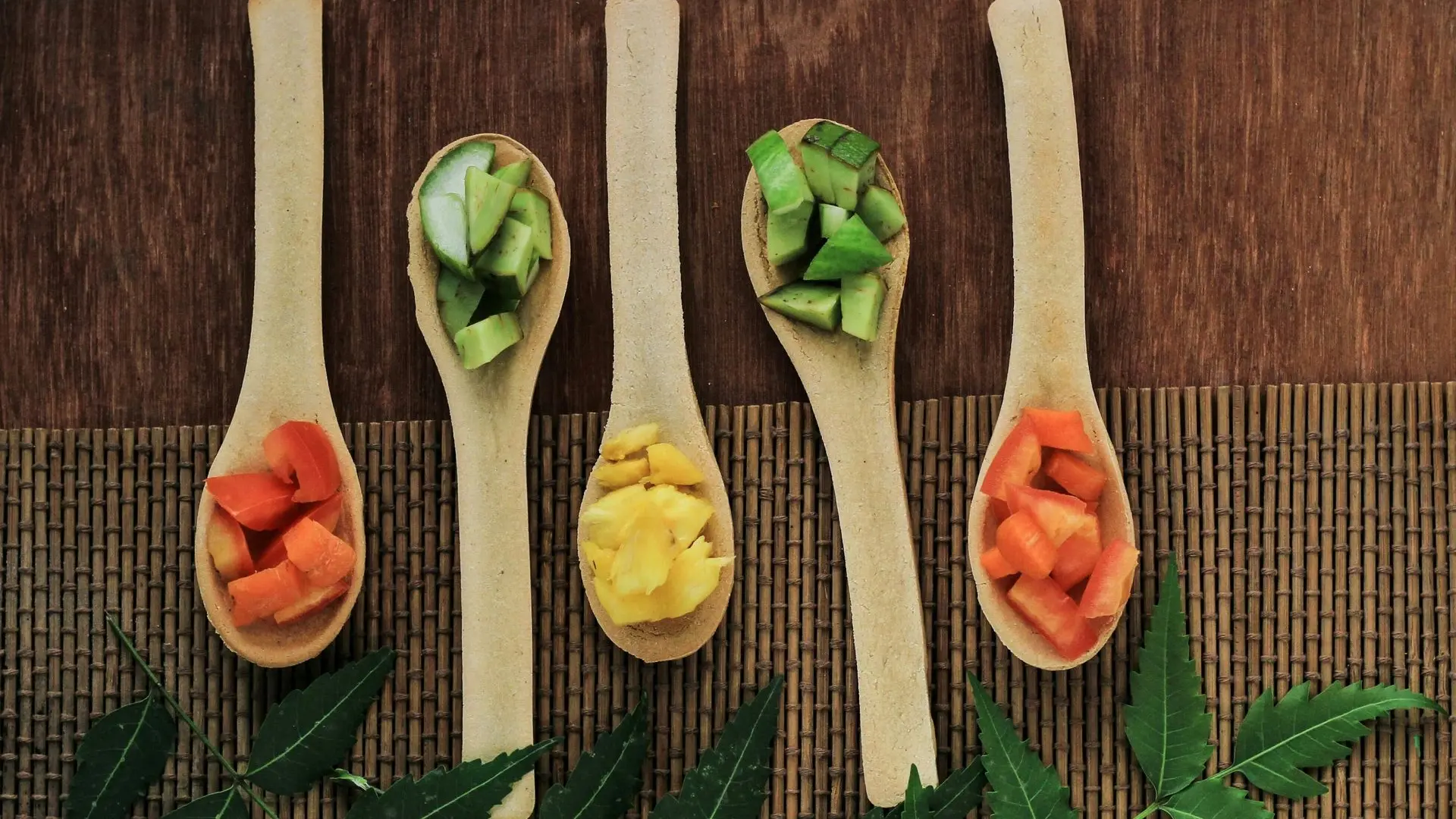MINERAL OIL
We use high-grade mineral oil on our chopping boards. Mineral oil is one of the best treatments for wooden chopping boards. When used correctly, it helps preserve the board’s appearance, durability, and hygiene. It is food-grade, meaning it's purified and safe for contact with food. It is colorless, odorless, and tasteless, making it ideal for kitchen use.
Benefits of Mineral Oil for Chopping Boards
Protects the Wood
Prevents Drying and Cracking: Wood can dry out over time, especially after washing. Mineral oil penetrates the wood fibers, keeping them supple and reducing the risk of splitting.
Maintains Structural Integrity: Regular oiling prevents warping and helps the board retain its shape.
Repels Water and Stains
Water-Resistant Barrier: Mineral oil fills the pores of the wood, reducing how much moisture it absorbs. This helps prevent swelling, warping, and bacteria buildup.
Stain Prevention: Oiled boards are less likely to absorb juices and odors from foods like beets, onions, or meat.
Food-Safe and Non-Toxic
Safe for Food Prep: Food-grade mineral oil won’t go rancid like some vegetable oils, making it a safe and long-lasting choice for surfaces that come into contact with food.
Easy to Apply and Maintain
Low Maintenance: Simply apply a generous amount, let it soak in, and wipe off the excess. Frequent reapplication (every few weeks or as needed) keeps the board in excellent condition.
Restores Appearance: Mineral oil revives dull or dry wood, bringing out its natural grain and giving it a rich, healthy look.
For even better protection, mineral oil can be combined with beeswax in a board conditioner, which adds a light sealing layer for extra water resistance.
TUNG OIL
Tung oil is a natural drying oil extracted from the seeds of the tung tree. It's known for its durability and water-resistant finish, making it a popular choice for woodworking. However, its use on chopping boards requires careful consideration. Tung oil is a plant-based oil that hardens upon exposure to air, forming a tough, water-resistant surface. It has been used for centuries as a wood finish due to its ability to penetrate and cure within the wood grain.
There are two common types:
Raw tung oil – natural and food-safe once fully cured.
Polymerized or modified tung oil – often mixed with solvents, not always food-safe.
Benefits of Tung Oil for Chopping Boards
Durable, Hard Finish
Cures to a Protective Layer: Unlike mineral oil, tung oil hardens as it dries, creating a semi-gloss finish that repels water and resists wear.
Long-Lasting: Once cured, tung oil can offer longer protection with less frequent reapplication compared to mineral oil.
Water and Stain Resistance
Natural Sealant: Cured tung oil creates a barrier against moisture, which helps prevent warping, swelling, and bacterial growth.
Stain Protection: Reduces the chance of food stains and odors being absorbed into the wood.
Enhances Appearance
Deepens Grain: Tung oil enhances the natural grain and color of the wood, giving chopping boards a rich, warm finish.
Natural and Food-Safe (When Pure)
Non-toxic when cured: Pure tung oil is food-safe after fully curing (which can take several days or more).
Eco-friendly: A renewable, plant-based option without synthetic chemicals (as long as it’s 100% pure tung oil).
Important Considerations
Longer Curing Time: Pure tung oil can take 7–14 days or more to fully cure, depending on temperature and humidity.
Multiple Coats Needed: For optimal protection, several thin coats are required, with drying time between each.
Not All Tung Oil Is Safe: Many commercial tung oil finishes are mixed with solvents—always check for 100% pure tung oil for food contact surfaces.
LINSEED OIL
Linseed oil, also known as flaxseed oil, is a traditional wood finish that comes from the dried seeds of the flax plant. When used properly, it can enhance and protect wooden surfaces—including chopping boards—but with important considerations around safety and preparation.
There are two main types:
Raw linseed oil – Natural and can be food-safe once fully cured, but has a very long drying time.
Boiled linseed oil (BLO) – Chemically treated or mixed with drying agents to speed up curing, not food-safe and should never be used on chopping boards.
Benefits of Linseed Oil for Chopping Boards (Raw Only)
Deep Penetration and Hydration
Soaks into wood grain: Raw linseed oil penetrates deeply, nourishing the fibers and helping to prevent cracking, drying, and warping.
Preserves structure: Helps maintain the board’s integrity through regular conditioning.
Enhances Natural Beauty
Warm, rich tone: Linseed oil deepens the wood’s natural color and highlights the grain, giving chopping boards an attractive, well-maintained appearance.
Natural and Plant-Based
Eco-friendly: Derived from flax seeds, it’s a sustainable, biodegradable product.
Safe when pure and cured: 100% raw linseed oil is non-toxic once cured, making it suitable for food contact surfaces.
Mild Water Resistance
Protects from moisture: After curing, it offers light resistance to water, which helps reduce warping and bacterial buildup from repeated washing.
Important Considerations
Slow to Dry: Raw linseed oil can take several days to weeks to fully cure, especially in thick layers.
Reapplication Required: Like other natural oils, it wears over time and needs to be reapplied regularly.
Never Use Boiled Linseed Oil: This version often contains heavy metals or chemical dryers, which are toxic and unsafe for food contact.
Raw linseed oil can be a good natural option for wooden chopping boards, especially for those who prefer plant-based, sustainable products. However, due to its very long drying time and the risk of using unsafe versions (like boiled linseed oil), many people choose mineral oil or pure tung oil instead, as they offer easier application and quicker results.
DANISH OIL
Danish oil is a popular wood finish known for its ease of application and attractive results. However, when it comes to chopping boards, its use comes with caveats. Danish oil is a blend of oils (often linseed or tung), solvents, and sometimes synthetic resins. It penetrates the wood like an oil but also leaves a hard, protective finish like a varnish.
The exact formula varies by brand, but most commercial Danish oils contain drying agents or chemical additives, which make them unsuitable for direct food contact unless explicitly labeled food-safe.
Benefits of Danish Oil (In General Wood Use)
Easy to Apply
Wipes on easily and dries faster than raw linseed or tung oil.
Great for DIY projects needing a clean, satin finish.
Attractive Finish
Enhances wood grain with a low-lustre sheen.
Gives a smooth, semi-hard surface that’s pleasant to the touch.
Water and Stain Resistance
Cures to a tougher finish than raw oils, offering good moisture protection.
Why Danish Oil Is Not Usually Recommended for Chopping Boards
Not always food-safe. Most contain solvents or metal driers that are toxic and unsafe for food contact.
Seals surface too tightly. Creates a film that can eventually flake or chip, especially with knife use.
Not designed for cutting. Danish oil finishes aren’t intended to endure frequent cutting or washing.
If You Do Use Danish Oil
Choose a food-safe version: Only use brands that explicitly state they are safe for use on food-contact surfaces after curing (e.g., Tried & True Danish Oil).
Let it cure completely: Curing can take 7–30 days depending on the formula. The board must be fully dry, odorless, and hard before contact with food.
Recoat as needed: Though durable, the finish may wear with frequent washing or knife use.
Safer Alternatives for Chopping Boards
Food-grade mineral oil – Easy to apply, reapply, and completely food-safe.
Pure tung oil – Cures to a hard, durable finish and is food-safe when 100% pure and fully cured.
Beeswax blends – Often used with mineral oil for an extra layer of water resistance.
Danish oil can enhance the look and moisture resistance of wood, but it’s not the best choice for chopping boards unless clearly labeled food-safe. For a kitchen surface that regularly contacts food and knives, mineral oil, tung oil, or beeswax blends are much safer and more practical.
COCONUT OIL
Coconut oil is a natural, plant-based oil that some people use to condition wooden chopping boards. It can hydrate the wood and bring out its grain, but it comes with important limitations—especially regarding stability and food safety over time.
Coconut oil is extracted from the meat of coconuts and is available in two main forms:
Unrefined (virgin) coconut oil – minimally processed, aromatic, and more prone to spoilage.
Refined coconut oil – deodorized, more stable, and less likely to go rancid.
Benefits of Coconut Oil for Chopping Boards
Natural and Plant-Based
Non-toxic and edible: Coconut oil is safe for food contact surfaces, especially in its refined form.
Eco-friendly: A sustainable and renewable alternative to petroleum-based oils.
Moisturizes and Protects Wood
Penetrates the grain: Helps prevent the wood from drying, cracking, or splintering.
Enhances appearance: Gives chopping boards a rich, warm tone and highlights natural wood grain.
Antimicrobial Properties
Natural lauric acid content (especially in virgin coconut oil) gives it mild antibacterial qualities, which some see as a bonus in kitchen settings.
Limitations and Considerations
Can go rancid. Unrefined coconut oil contains fats that can spoil over time, especially in warm or humid environments. This can lead to unpleasant smells and potential bacterial growth.
Shorter lifespan. Even refined coconut oil breaks down faster than mineral or tung oil and may need more frequent reapplication.
Not highly water-resistant. Offers only light water protection compared to oils that cure, like tung oil.
Tips for Safe Use
Use refined, food-grade coconut oil – It’s more stable, odorless, and less likely to spoil.
Store treated boards properly – Keep in a cool, dry place to reduce the risk of rancidity.
Reapply regularly – Especially after washing or heavy use.
Coconut oil can be used to condition wooden chopping boards, especially in a pinch, but it’s not the most stable or long-lasting option. If you do choose it, refined coconut oil is the safest and most appropriate form. For better long-term protection and no risk of spoilage, mineral oil, pure tung oil, or beeswax-based board creams are more reliable choices.
WALNUT OIL
Walnut oil is a natural, plant-based oil often used to condition and protect wooden chopping boards. It’s appreciated for its food safety, aesthetic enhancement, and eco-friendliness—but there are a few important factors to consider. When choosing walnut oil for a chopping board, always use food-grade, heat-treated walnut oil designed for wood finishing.
Walnut oil is extracted from walnuts, either:
Cold-pressed (raw) – typically used in cooking, may go rancid over time.
Heat-treated or polymerized – processed for use as a wood finish; cures better and lasts longer.
Benefits of Walnut Oil for Chopping Boards
Food-Safe and Natural
Safe for kitchen use: Pure walnut oil is edible and non-toxic, making it appropriate for food-contact surfaces like chopping boards.
Plant-based: A great alternative to petroleum-based products like mineral oil.
Cures to a Light Protective Finish
Drying oil: Unlike mineral oil, walnut oil polymerizes (hardens) over time when exposed to air, creating a subtle protective layer that resists water and stains.
Longer-lasting protection: You won’t need to reapply as often compared to non-curing oils like mineral oil.
Enhances Wood Appearance
Rich, warm finish: Walnut oil brings out the grain and color of the wood, leaving a smooth, attractive surface with a soft sheen.
Easy to Apply
Wipe-on, wipe-off application, usually without needing multiple coats.
Low odor and easy cleanup compared to some synthetic finishes.
Important Considerations
Nut allergy caution. Though rare, those with severe nut allergies may want to avoid walnut oil, especially in commercial settings.
Can go rancid (if raw). Raw, uncured walnut oil (like cooking oil) may spoil over time; use heat-treated walnut oil for best results.
Longer curing time. Like tung oil, it requires time to fully dry and cure—often 2–3 days or more.
Walnut oil is an excellent option for chopping boards—if you use a cured, food-safe version. It combines the aesthetic appeal of a drying oil with the safety and simplicity needed for kitchen use. Just be mindful of curing time and nut allergies, and you’ll have a beautiful, well-protected board.
HARDWAX OIL
Hardwax oil is a modern wood finish that combines natural oils and waxes to provide a strong, water-resistant, and attractive surface. It's widely used on timber flooring and furniture—but when it comes to chopping boards, its suitability depends on the specific formulation. Hardwax oil is a blend of plant-based oils (like linseed or sunflower) and natural waxes (such as carnauba or beeswax). It penetrates into the wood like oil while also forming a light wax barrier on the surface for added protection. Some hardwax oils contain solvents or additives for faster drying and durability, so only food-safe versions (e.g., labeled for use on kitchenware or toys) should be used on chopping boards.
Benefits of Hardwax Oil for Chopping Boards (When Food-Safe)
Durable and Protective Finish
Resists moisture and stains: The wax component forms a mild surface barrier that repels water and prevents food juices from soaking into the wood.
Holds up to washing: Offers better resilience than non-curing oils like mineral or coconut oil.
Natural Look and Feel
Satin-matte finish: Enhances the wood’s natural grain and color without making it look glossy or plastic-like.
Non-greasy surface: Once cured, the board feels dry and smooth, not oily.
Low Maintenance
Longer intervals between reapplication: Compared to mineral oil, hardwax oil finishes last longer before needing a refresh.
Easy spot repair: You can reapply in worn areas without stripping the whole board.
Eco-Friendly (Depending on Brand)
Many high-quality hardwax oils are made with sustainable, non-toxic ingredients—especially those formulated for children's toys or kitchenware.
Important Considerations
Check for food safety. Only use hardwax oil clearly labeled as food-safe. Many contain solvents not safe for food contact.
Curing time required. Must fully cure (often 2–5 days) before using the board for food prep.
Not ideal for heavy cutting. For cutting-intensive boards, hardwax oil may wear faster or develop shallow surface cuts.
Food-safe hardwax oil is a great option for chopping boards that are used more for serving, light slicing, or presentation. It provides a tougher, longer-lasting finish than mineral oil, while still preserving the natural beauty of the wood. However, for boards used for heavy chopping or frequent knife work, a re-oiling routine with mineral oil or tung oil may be more practical and easier to maintain.
What Oils NOT to use
Vegetable Oils
Never use vegetable oils (i.e. olive oil, corn oil, sunflower oil) to maintain a cutting board. These non-drying oils will never harden and protect the wood. They will remain sticky, attract bacteria and become rancid. We’re talking an unhealthy dose of unpleasant odours and tastes!
Varnish
Many sources advise against using varnish (also called shellac or lacquer) or polyurethane finishes on chopping boards. Not only can some of these finishes be toxic to humans but they also create a film on the wood which will flake and chip over time. Knife damage and exposure to water makes this flaking worse and this creates the ideal environment for bacterial growth.
Instead of using a finish that builds up a film, what you really want is an oil that will soak into the wood. There are a number of oils that are recommended, but sometimes the names of these products can be misleading, so make sure you always read the label.



